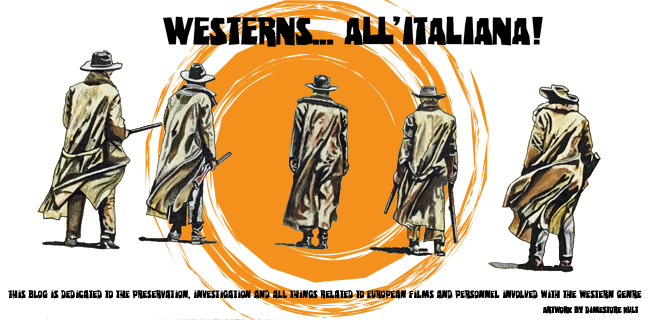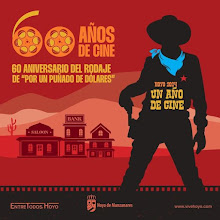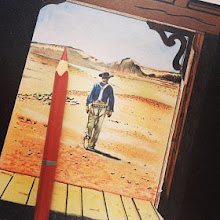Z News
By Vikas Datta/IANS
July 17, 2017
Bullets flying as gunmen confront each other in the
streets or saloons, cowboys lassoing cattle on sprawling ranches across a
starkly beautiful panorama, wagon-borne pioneers riding across boundless plains
with a worried eye out for Red Indians, bounty-hunters, treasure hunters and
more -- a small part of American history has extended beyond its time and space
to leave a global cultural impact.
But why has a period of some five decades of the 19th
century in a large expanse of the United States` (then) empty middle become
such a cultural phenomenon? How has the typical American genre of the
"Western" inspired German, French and British writers, or Italian,
East European and Indian film directors, and have admirers from Adolf Hitler to
Joseph Stalin? And how realistic are the Westerns we read or see?
First, what do Westerns actually entail?
Set in the `Wild West`, the mostly uncharted, unsettled
and loosely governed areas west of the Mississippi River, Westerns span from
around the late 1840s to 1890 when the end of the frontier was officially
declared (but may linger on to into the new century), have their own specific
features, stock characters and settings from the cold mountains of the north to
plains to the desert in the south (most common).
The plot may feature a lawman`s challenges from
outlaws/Red Indians/powerful vested interests, a nomadic mysterious gunman
riding into town or small, isolated homestead to rid it of threats, a wronged
man`s quest to take revenge, fighting off Red Indians or outlaws to protect
settlers, building up a ranch from scratch and fending off cattle rustlers or
larger unscrupulous neighbors or the like.
The characters include the cowboy, the drifter who is
likely to be a gunslinger, quite possibly the "Fastest Gun in the
West", and sometimes something-or-the-other kid. Against them will be
outlaws -- bandits, rustlers, or highwaymen, unscrupulous business barons or
savage/noble Red Indians. While the law is represented by judges and sheriffs
-- good, bad or ineffective -- or US marshals, there will also be bounty
hunters, homesteaders, (usually placid) townfolk, professional gamblers,
preachers, prostitutes, and soldiers.
The genre in itself is even older than the classic
Western era, originating in the early 19th century with American author James
Fenimore "The Last of the Mohicans" Cooper when the frontier was more
eastward. Its common tropes were established by the mid-century cheap but lurid
"dime novels" (American versions of the British "penny
dreadfuls") with fictional exploits of real people like Billy the Kid, Kit
Carson, Wyatt Earp, Wild Bill Hickok and so on, and subsequently, the pulp
magazines.
Meanwhile, even before American Owen Wister`s "The
Virginian" (1902), regarded as the first Western novel, or Zane Grey`s
"Riders of the Purple Sage" (1912), there was already Austrian Carl
Anton Postl alias Charles Sealsfield`s "Tokeah or the White Rose"
(1829), Frenchman Gabriel Ferry`s "Le Coureur de Bois" and Irishman
Thomas Mayne Reid`s "The Rifle Rangers" (both 1850).
Without setting a foot in the US, German author Karl
Friedrich May, from the 1870s onwards, created a whole series of novels set in
the American Old West, featuring Apache chief Winnetou and his White
"blood brother" Old Shatterhand, making the genre popular in the
German-speaking world.
In the modern era, Americans like Clarence Mulford
("Hopalong Cassidy" stories), Max Brand (Frederick Schiller Faust)
and later Louis L`Amour, were complemented by English authors like J.T. Edson
with his Civil War and other Westerns and Terry Harknett alias George G.
Gilman.
But for those looking for the classic stuff couldn`t do
better than read the books adapted into acclaimed Western films -- say Walter
Van Tilburg Clark`s "The Ox-Bow Incident" (1940) in which two
drifters are drawn into a lynch mob, Roy Chanslor`s "The Ballad of Cat
Ballou" (1956), which is darker than the Lee Marvin/Jane Fonda film,
Stuart Lake`s "Wyatt Earp: Frontier Marshal" (1931), which inspired
"My Darling Clementine", Jack Schaefer`s "Shane" (1953),
Charles Portis` "True Grit" (1968) or Elmore Leonard`s revisionist
"Hombre" (1961).
And how does the actual West compare with its cultural
depiction? Well, though it was lawless and violent, there were no huge
shootouts, the quick draw showdowns were rare, guns were not very precise or
rapid fire, gunfights and violent criminals were common elsewhere too, people
carrying guns in most towns could get arrested than shot, and be more likely to
die from disease or in an accident than to be killed in a gunfight or by
Indians. And while there were white cowboys, most were likely to be black,
Hispanic, Asian or Native American.
But why is the genre so popular? Has it something to do
with its setting of yet untamed wilderness, personal codes of honour and direct
justice (in a shooting showdown), some trappings of civilisation but not its
social order, and the adventure?
And then, there is always something to be said for that
endings with a ride into the sunset.











No comments:
Post a Comment